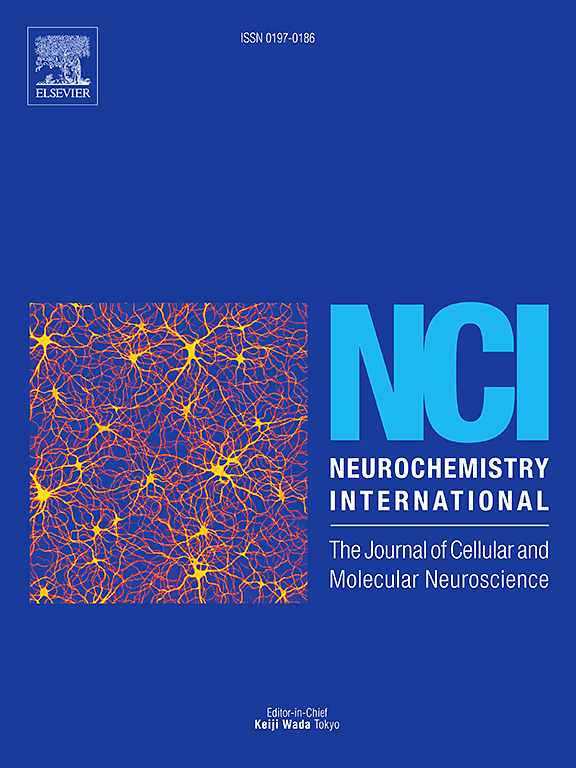Aerobic exercise rescues synaptic plasticity in early-stage Alzheimer's disease by suppressing miR-3473e to activate EphB2-dependent NMDA/AMPA receptor signaling
IF 4
3区 医学
Q2 BIOCHEMISTRY & MOLECULAR BIOLOGY
引用次数: 0
Abstract
Cognitive dysfunction in early-stage Alzheimer's disease (AD) involves significant impairments in synaptic plasticity and dendritic spines integrity. Intriguingly, exercise interventions have demonstrated efficacy in enhancing cognitive function. However, the precise molecular mechanisms, particularly the upstream endogenous regulators (such as miRNAs) through which exercise mediates this synaptic improvement, remain unclear. Our findings indicated that 12 weeks of aerobic exercise effectively increased learning and memory, promoted amyloid beta (Aβ) and cerebral amyloid angiopathy (CAA) clearance in early-stage AD. Furthermore, aerobic exercise markedly enhanced dendritic spines density of pyramidal neurons in cortical layers II/III and the hippocampal CA1 region, as well as the expression of synapse-associated proteins such as cAMP response element-binding protein (CREB), synaptophysin (SYN), and postsynaptic density protein 95 (PSD95). Whole genome RNA sequencing (RNA-Seq) and bioinformatics analysis was performed to identify miR-3473e, a target closely related to AD and also a response factor that serves as a key mediator of aerobic exercise benefits. Subsequent findings revealed that miR-3473e was overexpressed in the brains of APP/PS1 mice, whereas aerobic exercise led to a decrease in its expression. Moreover, aerobic exercise enhanced its downstream targets, EPH receptor B2 (EphB2) and solute carrier family 1 member 1 gene (Slc1a1) as well as increased downstream GluN1, GRIA1 and p-GluN2B/GluN2B protein expression levels. In summary, we demonstrate that aerobic exercise can improve synaptic plasticity, and these effects are mediated via suppression of miR-3473e and regulation EphB2-NMDA/AMPA receptor signaling pathway, underscoring the potential of aerobic exercise to enhance cognitive function in early-stage of AD.
有氧运动通过抑制miR-3473e激活ephb2依赖性NMDA/AMPA受体信号通路,挽救早期阿尔茨海默病的突触可塑性
早期阿尔茨海默病(AD)的认知功能障碍涉及突触可塑性和树突棘完整性的显著损伤。有趣的是,运动干预已被证明对增强认知功能有效。然而,确切的分子机制,特别是运动介导突触改善的上游内源性调节因子(如mirna),仍不清楚。我们的研究结果表明,12周的有氧运动有效地提高了早期AD患者的学习和记忆能力,促进了β淀粉样蛋白(Aβ)和脑淀粉样血管病(CAA)的清除。此外,有氧运动显著增强皮质II/III层和海马CA1区锥体神经元的树突棘密度,以及cAMP反应元件结合蛋白(CREB)、突触素(SYN)和突触后密度蛋白95 (PSD95)等突触相关蛋白的表达。通过全基因组RNA测序(RNA- seq)和生物信息学分析来鉴定miR-3473e,这是一个与AD密切相关的靶标,也是一个反应因子,是有氧运动益处的关键中介。随后的研究结果显示,miR-3473e在APP/PS1小鼠的大脑中过表达,而有氧运动导致其表达降低。此外,有氧运动增强了其下游靶点EPH受体B2 (EphB2)和溶质载体家族1成员1基因(Slc1a1),增加了下游GluN1、GRIA1和p-GluN2B/GluN2B蛋白的表达水平。综上所述,我们证明有氧运动可以改善突触可塑性,这些作用是通过抑制miR-3473e和调节EphB2-NMDA/AMPA受体信号通路介导的,强调了有氧运动在AD早期增强认知功能的潜力。
本文章由计算机程序翻译,如有差异,请以英文原文为准。
求助全文
约1分钟内获得全文
求助全文
来源期刊

Neurochemistry international
医学-神经科学
CiteScore
8.40
自引率
2.40%
发文量
128
审稿时长
37 days
期刊介绍:
Neurochemistry International is devoted to the rapid publication of outstanding original articles and timely reviews in neurochemistry. Manuscripts on a broad range of topics will be considered, including molecular and cellular neurochemistry, neuropharmacology and genetic aspects of CNS function, neuroimmunology, metabolism as well as the neurochemistry of neurological and psychiatric disorders of the CNS.
 求助内容:
求助内容: 应助结果提醒方式:
应助结果提醒方式:


